You can contact LEARNZ, part of CORE Education, at:
Postal Address:
PO Box 13 678,
Christchurch 8141,
New Zealand
Watch Shelley's diary cam video
Kia ora koutou,
Antarctica is the coldest, windiest and driest place on Earth. This extreme environment captures people’s imagination and has attracted explorers and scientists from all over the world. During this field trip, you will experience some of the wonders of Antarctica for yourself.
Destination Antarctica
After months of preparation and anticipation it was a relief to finally board the mighty C17 aircraft in Christchurch. This flight is run by the United States Airforce and is nothing like the comfortable passenger planes you may have travelled on in the past. These planes are designed to carry a huge amount of cargo, including helicopters. It felt rather strange to be seated alongside a helicopter and have no window from which to look out, but I wasn’t about to complain. People excitedly found their seats down the side of the aircraft and peeled off layers of clothing. Yesterday Antarctica New Zealand issued you with all your ECW (Extreme Cold Weather Clothing) and you had to wear this on the plane. The aircraft door was closed and the engines started up. It was so noisy you had to wear ear plugs. You were forced sideways in your seat as the plane hurtled down the runway to take off and then you were finally on your way to Antarctica.
Flying south
Once the plane reached its cruising altitude you were free to leave your seat and wander around the aircraft. Some people stretched out on the floor for a snooze, while others made their way to one of the four small windows positioned at the front and rear of the plane. There wasn’t much to see at first but later in the flight sea ice became visible. It was incredible to look out over huge stretches of broken ice. Antarctica is surrounded by hundreds of kilometres of sea ice in winter and this sea ice has only just started to melt back during the last two months. Later you were allowed to visit the cockpit to get an even better view. You could and see the tops of mountains above a layer of ice as you flew over northern Victoria Land.
Landing on ice
Unfortunately, you had to return to your seat as the C17 made its descent. The landing was surprisingly smooth considering we were landing on an ice shelf floating on the ocean. There was much excitement as people buried themselves in layers of clothing ready to step out into the cold. It may have taken you a moment to get used to the glare as you walked out on to the ice. You were lucky to arrive in such stunning conditions and mild temperatures. There was no wind and it was only -10 degrees which is quite warm for this time of year in Antarctica.
Settling in at Scott Base
You were met by staff from Antarctica New Zealand and driven in a 4WD across the ice shelf to Scott Base on Ross Island where you will be staying for the next few days. It felt amazing to finally be in Antarctica. You might have been wanting to get out and explore but you won’t be allowed off base until you have completed your Antarctica Field Training (AFT). After a tour of Scott Base and a scrumptious dinner you were ready for an early night. Luckily all the bunkrooms have shutters on the windows to block out the sunlight so you could sleep.
Antarctic Field Training
You had to report for AFT at 8.30 in the morning. During your training, you were issued with field manuals which had all the information you will need to stay safe in Antarctica. Drew Coleman, an Antarctic field trainer, taught you everything you needed to know. You learnt about weather, first aid and navigation. After time in the classroom you were finally able to head outdoors. You went out onto the sea ice to practice pitching tents, placing ice anchors and lighting gas stoves. While out in the field conditions can change very quickly and people do need to be prepared for this. If the visibility drops you might have to pitch a tent and wait out a storm so it was good to be able to practice this. You can watch the video to find out more about Antarctic Field Training.
It has been a very exciting and busy couple of days and now you are ready to safely go and explore Antarctica.
See you in the morning,
Shelley the LEARNZ field trip teacher.
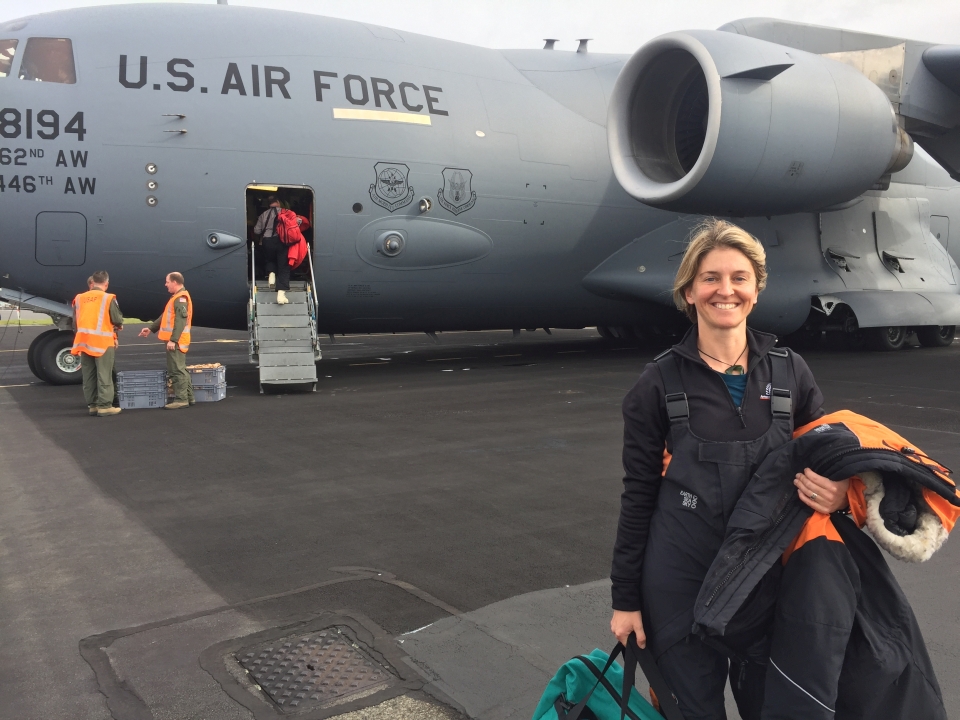
Shelley prepares to board the C17 Globemaster aircraft destined for Antarctica. Image: LEARNZ.
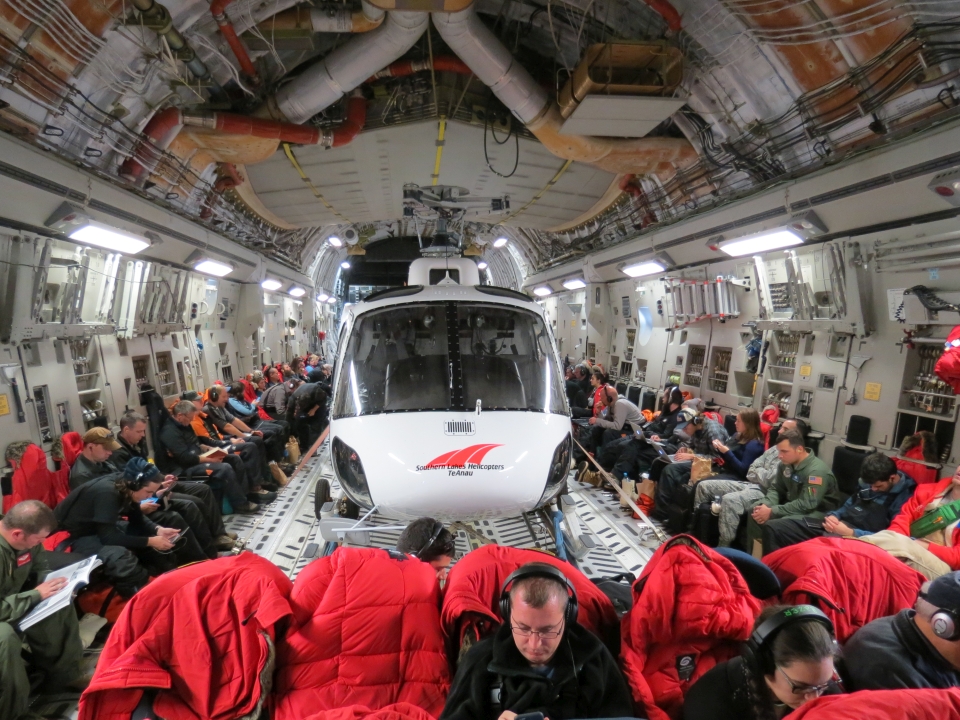
There is even room for a helicopter inside the C17 aircraft. Why do you think the C17 aircraft are used for flying to Antarctica? Image: LEARNZ.
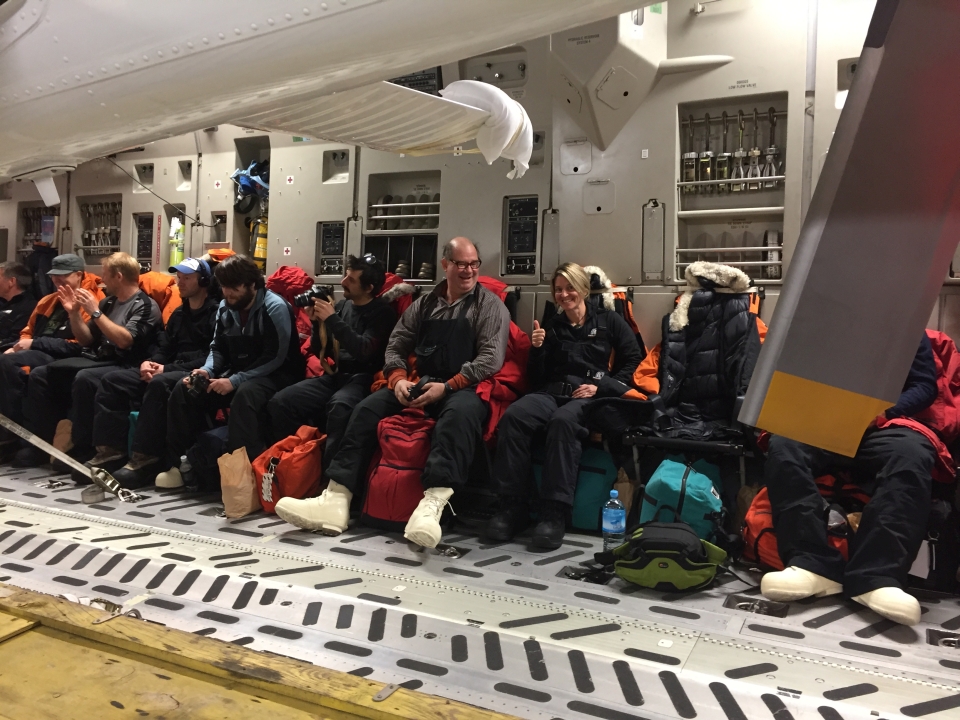
Not the most comfortable seats but it is great to be on our way to Antarctica. Image: LEARNZ.
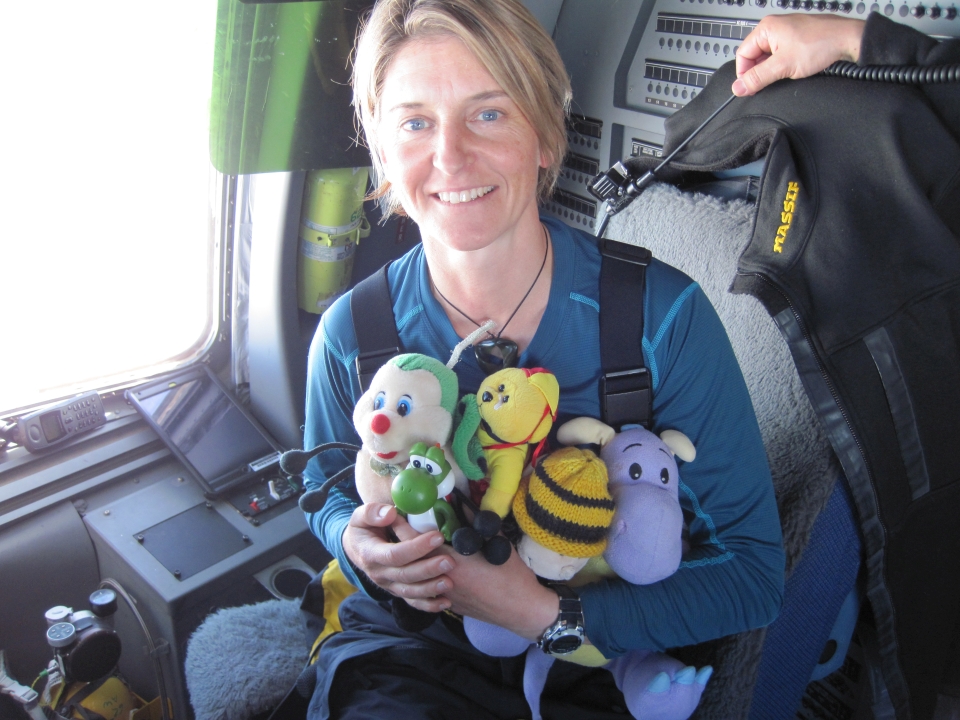
Shelley and the ambassadors enjoy a visit to the cockpit of the C17 aircraft. Image: LEARNZ.
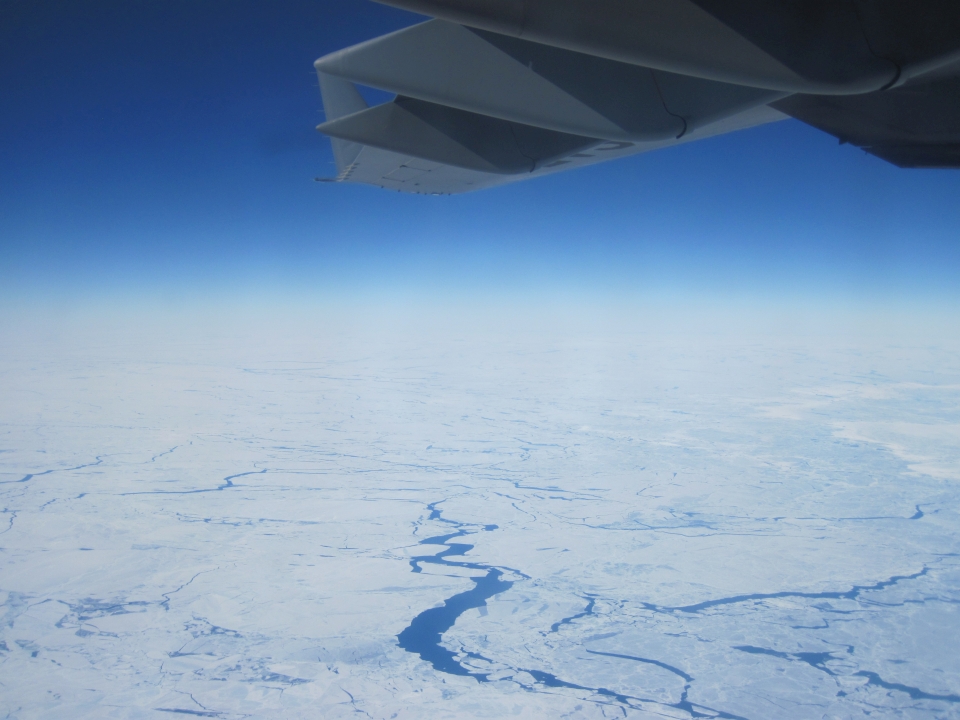
After flying four hours south sea ice can be seen from the C17. Image: LEARNZ.
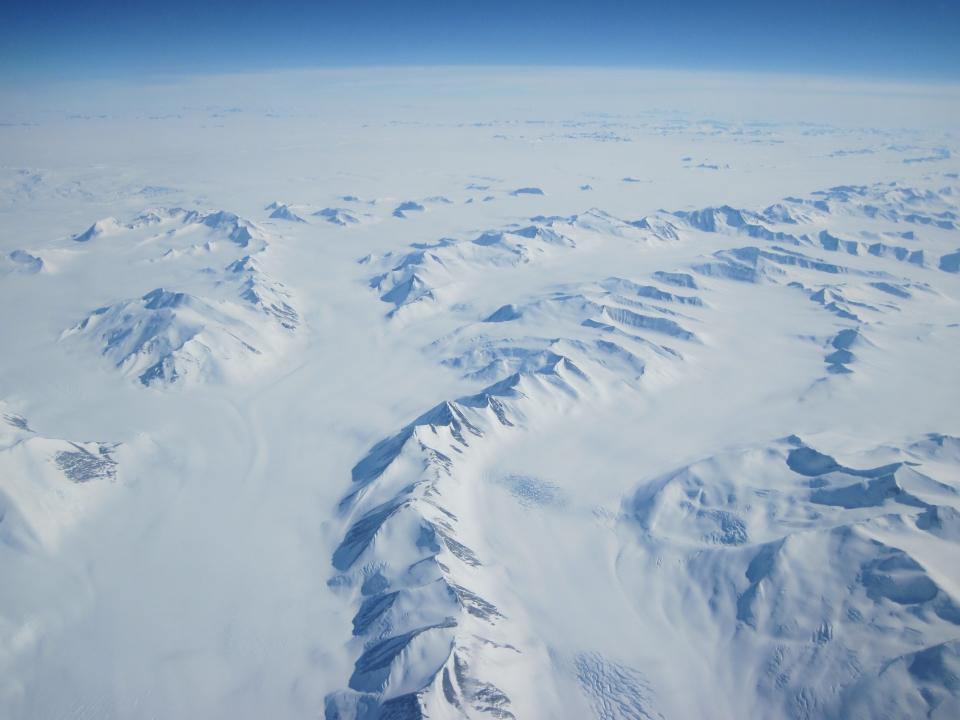
Mountains can be seen as we fly over northern Victoria Land. How high is the highest mountain in Antarctica? Image: LEARNZ.
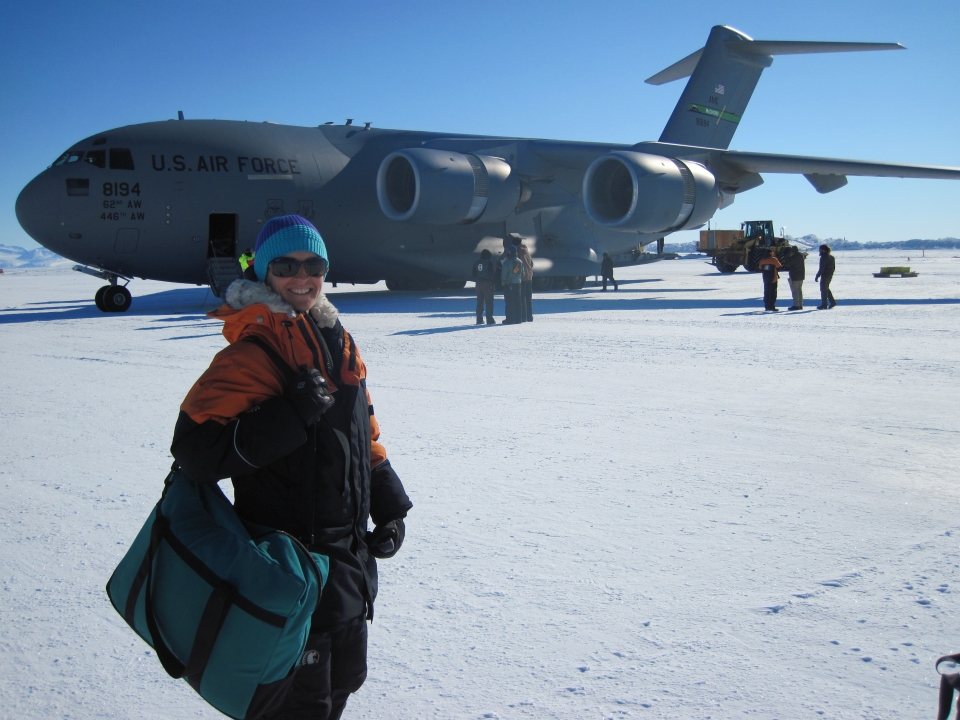
Shelley is super excited to finally arrive in Antarctica. The plane has landed on the ice shelf. How thick do you think this ice shelf is? Image: LEARNZ.
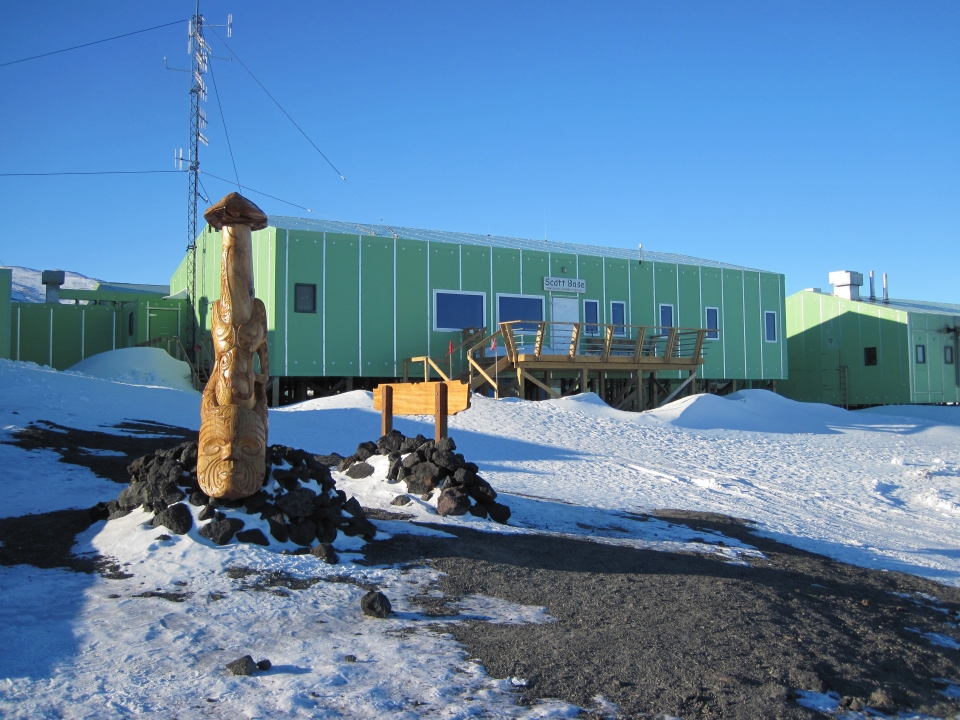
Welcome to Scott Base, your home for the next few days. Image: LEARNZ.
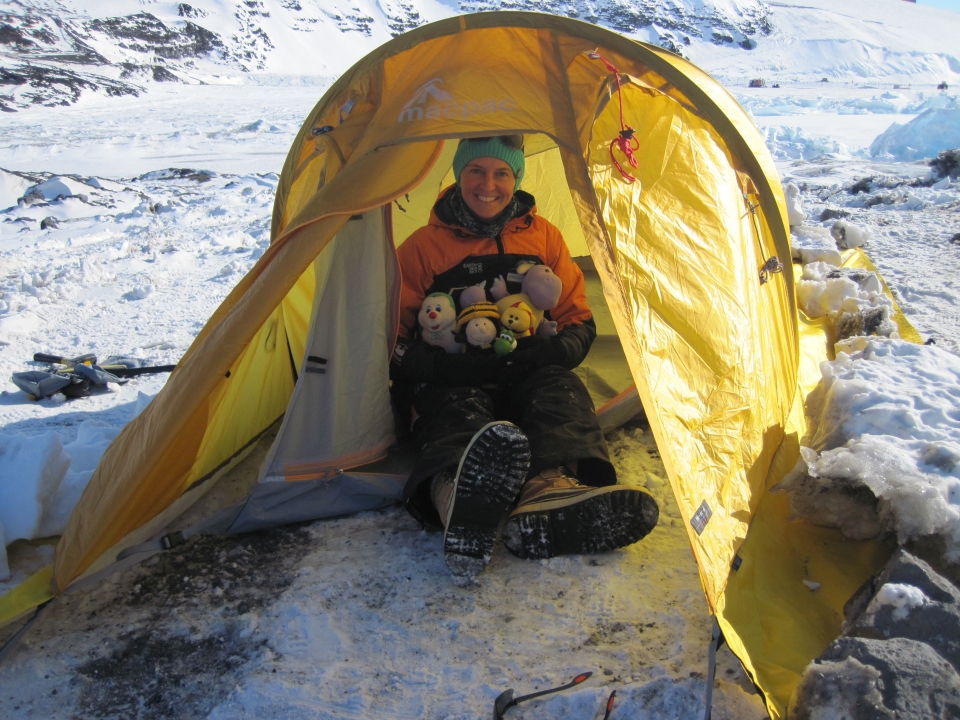
Shelley and the ambassadors practice pitching tents during their Antarctic Field Training. What else do you think people should learn about in order to stay safe while in Antarctica? Image: LEARNZ.
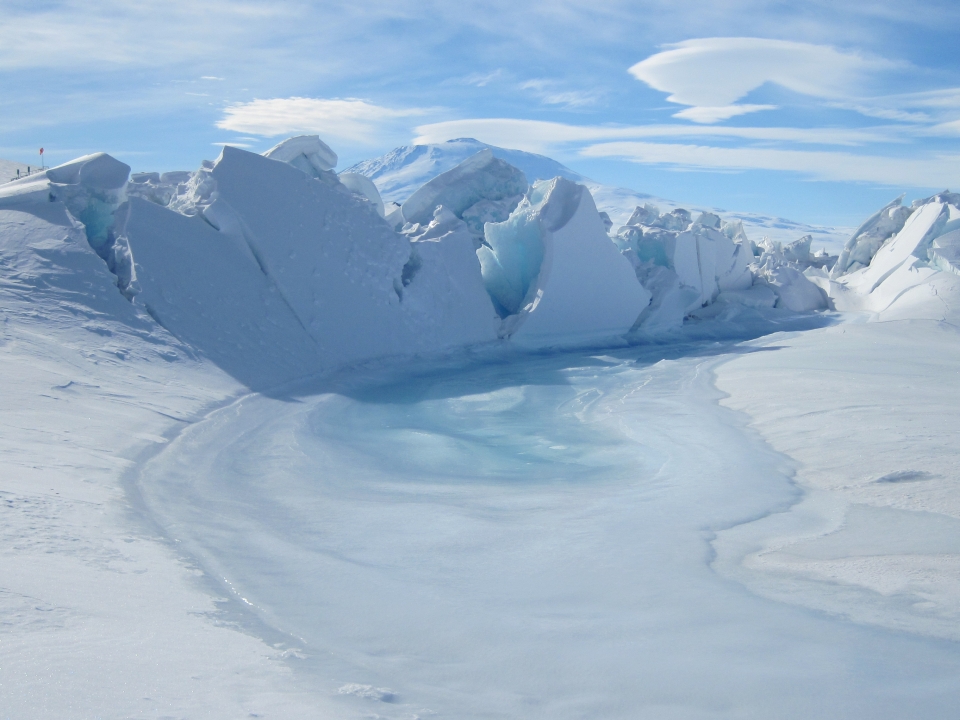
It is such a privilege to be in such a spectacular place. Image: LEARNZ.